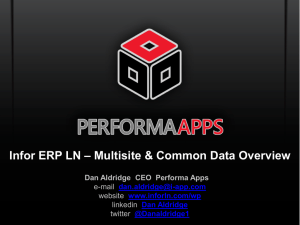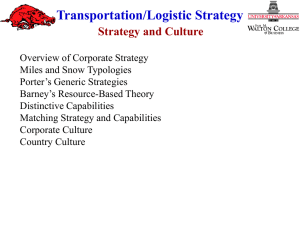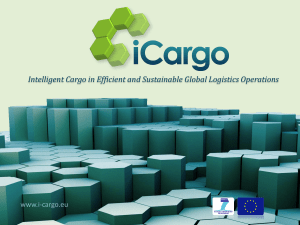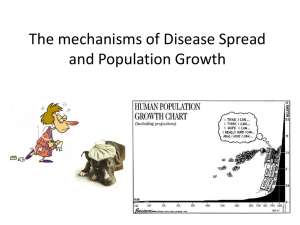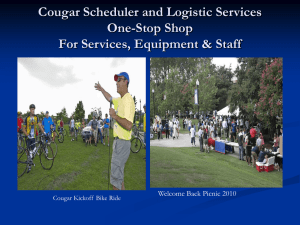iCargo_intro_v1.0 - Intelligent Cargo in Efficient and Sustainable
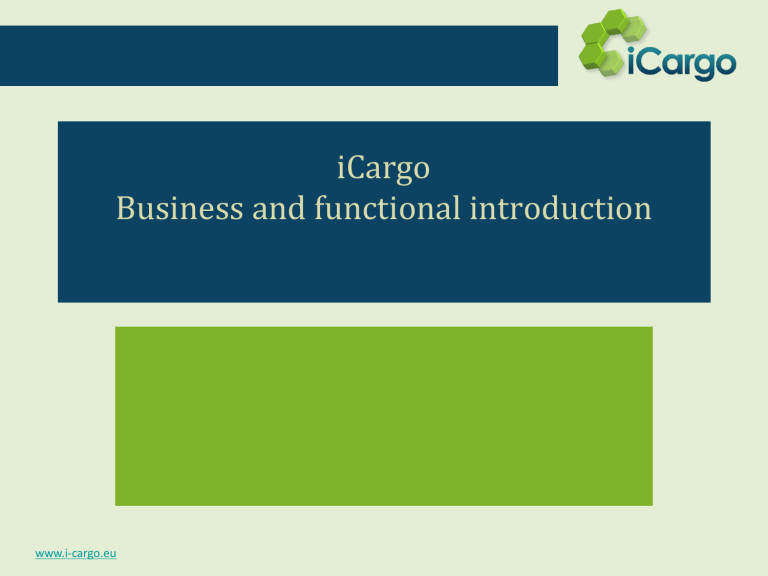
www.i-cargo.eu
iCargo
Business and functional introduction
Agenda
• Why (the business motivations)
• Who (the ecosystem)
• What (the three iCargo functions)
The iCargo Vision
• By 2020, efficient, low-carbon end-to-end transport and logistics services will be planned, executed and completed cooperatively in a global freight business ecosystem, based on fully interoperable cargo, vehicle, infrastructure and freight management systems, supporting optimal resources usage and real-time alignment of intermodal plans with on-going operations.
3
The iCargo approach
• Achieve the iCargo vision through an open freight management
ecosystem.
• A business ecosystem is an “ intentional community of economic actors ” having in common protocols, interfaces and an overall business goal.
• In the case of iCargo this is the provision of door-to-door low-carbon
logistic services, i.e., services that:
– cover an entire supply chain or a significant portion of it,
– produce less CO
2 than alternatives,
– make use of the iCargo ecosystem to combine services through different transport modes and providers.
The iCargo ecosystem
Door-to-door service
Roles and resources assigned on demand
Ecosystem
-Inclusive
-Decentralized
-Based on shared rules
Virtual Resources Network
-Automated resource discovery
Connected resources
-Selected on the basis of the Virtual
Resources Network Options
-Integrated view based on common semantics
-Support distributed monitoring and planning
5
5
Why should i join iCargo?
• For sustainability
– Increased load factor
– Less emissions
– Better utilized resources
• For market evolution
– Faster and more efficient delivery of smaller shipments
– Specialized logistic services, globally accessible, integrated but maximizing efficiency on a local scale
Collaborative Planning,
Open logistic networks, the “ Physical Internet ” www.physicalinternetinitiative.org
the “ Long Tail ” (C. Anderson, 2006)
6
Who should join?
Needs goods delivered with lower emissions, good performance and no extra cost
Needs to deliver doorto-door service by organizing logistic resources and capabilities
Needs to make own resources and capabilities accessible and well utilised
Logistic Services
Client (LSC)
Low-carbon door-to door service
Freight Services
Integrator (FSI)
Logistic resources and capabilities
Logistic Services
Provider (LSP)
Transport
Regulator (TR)
Regulatory
Compliance
To be in iCargo
Information services infrastructure
Information Services
Integrator (ISI)
Transport infrastructure
Transportation Network
Manager(TNM)
1. Find your role in the ecosystem
2. Connect with the other roles for necessary services
7
What do I get from iCargo?
• Logistic chain composition
– Open logistic network based on common definition of transport and logistic services.
– Collaborative planning support.
– Taking into account 3 dimensions: cost, effectiveness, emissions.
• Logistic network awareness
– Monitoring infrastructure based on Intelligent Cargo, vehicle and infrastructure connectivity.
– Re-planning triggered by automated monitoring and deviations.
– Dynamic alignment of individual service providers plans.
• Emissions monitoring
– Monitoring infrastructure includes collection of energy consumption data.
– Real-time calculation of emissions at shipment level.
8
Logistic chain composition
Integrate services into the ecosystem
Logistic Services
Provider (LSP)
Publish services
9
Logistic chain composition
Integrate services into the ecosystem
Discover and compose services
Logistic Services
Provider (LSP)
Publish services
Logistic Services
Client (LSC)
10
Logistic chain composition
Integrate services into the ecosystem
Discover and compose services
Logistic Services
Provider (LSP)
Publish services
Find best door-todoor solution
Logistic Services
Client (LSC)
11
Logistic network awareness
Cargo will be late
!
Automated event detection
12
Logistic network awareness
Propagation of changes
Cargo will be late
!
!
!
!
Automated event detection
Free up space for other cargo on waiting ship
Logistic Services
Provider (LSP)
13
Logistic network awareness
Re-planning to find alternative solution
Propagation of changes
Cargo will be late
!
!
Logistic Services
Client (LSC)
Delay recovered
+ Performance
+ Cost
+ Emissions
!
!
Automated event detection
Free up space for other cargo on waiting ship
Logistic Services
Provider (LSP)
14
Emissions monitoring
CO
2
Energy
Automated monitoring of environmental parameters detection
Logistic Services
Provider (LSP)
Certified emissions based on actual data
15
Emissions monitoring
Transport chain emissions per shipment
+ + +
..
Logistic Services
Client (LSC)
More accurate carbon footprint
CO
2
Energy
Automated monitoring of environmental parameters detection
Logistic Services
Provider (LSP)
Certified emissions based on actual data
16
Next steps
• Understand your business motivations for being in iCargo
(why?)
• Find your role (who? LSC, LSP, FSI or ISI?)
• Join the ecosystem
• Apply the three iCargo functions to your business
– Logistic chain composition
– Logistic network awareness
– Emissions monitoring
17
